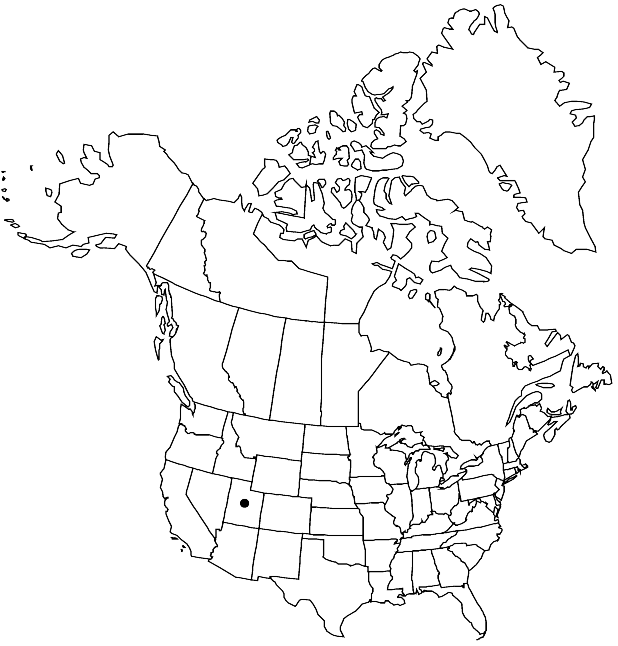Difference between revisions of "Physaria grahamii"
Ann. Carnegie Mus. 26: 220. 1937.
FNA>Volume Importer |
FNA>Volume Importer |
(No difference)
| |
Revision as of 20:20, 24 September 2019
Perennials; caudex branched, (thick, cespitose); densely pubescent, trichomes rays (appressed on leaves, ascending on pedicels and fruits), distinct, furcate or bifurcate. Stems several from base, decumbent to erect or ascending (unbranched), 1–2.5 dm. Basal leaves: (outer ones spreading, inner erect or ascending); blade ovate, often broadly so, 4–7 cm, margins repand to lyrate-lobed. Cauline leaves similar to basal, blade oblanceolate or narrowly oblong, reduced in size, (base gibbous). Racemes loose, (elongated). Fruiting pedicels (ascending to divaricate-ascending, sigmoid to nearly straight), 10–17 mm. Flowers: sepals lanceolate or narrowly oblong, 5.8–7.2 mm; petals (erect, sometime purplish or drying purple), narrowly oblong to oblanceolate, 7–10 mm, (not or weakly clawed). Fruits didymous, globose or subglobose, inflated, 10–13 mm, (papery, basal and apical sinuses deep); valves (retaining seeds after dehiscence), pubescent, trichomes ascending, appearing fuzzy; replum oblong to oblanceolate, as wide as or wider than fruit, apex obtuse; ovules 4 per ovary; style (4–)5–7 mm. Seeds plump, (suborbicular).
Phenology: Flowering May–Jun.
Habitat: Sagebrush, pinyon-juniper, ponderosa pine, Douglas-fir, limber pine communities on clay, or a mixture of shale fragments and clay
Elevation: 2100-2900 m
Discussion
Physaria grahamii is difficult to evaluate due to the paucity of collections. The tentative recognition by N. H. Holmgren (2005b) is followed here.
Selected References
None.
